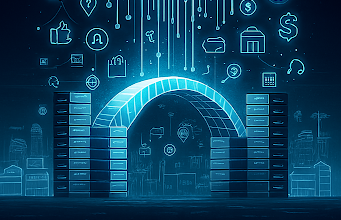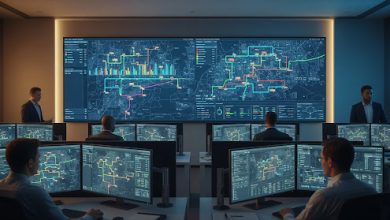
Optimizing the shopping experience with AI
In 2025, we have already seen that certain product displays or orientations, even down to the coloring of the packaging, size, quantity, and volume, are being fed into large language models alongside consumer and transactional data. Retailers can now evaluate, experiment with, and optimize their product placements, store layouts, and promotional strategies. Every element of the shopping experience is being refined based on data-driven insights. Based on signals from digital shelves or shoppers’ preferences and buying behaviors, brands can optimize their products towards the best-performing version. Optimization also extends to customers’ online experiences, which are becoming more curated and personalized to match unique preferences in real time.
The power of real-time personalization
This application of AI-powered geo-fencing takes personalization of the shopping experience a step further: Imagine being down the street from your local grocery store and receiving a personalized push notification on the grocery store’s app once you’ve parked in the lot out front that informs you of an 80% off discount on a product that you frequently purchase from this very location. The reality is that this is happening today.
Ultra-personalization will become the standard. Brands are already suggesting (at specific times) incredibly well-targeted promotions on products their consumers love based on individual preferences and habits. With AI, these shopping experiences will continue to become more increasingly tailored to the individual shopper.
Customers no longer need to scroll to find the discounted products they need when AI delivers these promotions at the right time and in the right place, increasing the likelihood of a purchase. Now imagine that is happening at scale across all your loyal customers, and the incentives increase dramatically as well. AI enables this path to increase sales, particularly with the use of hyper-personalization and geo-fencing.
How AI will Transform the Retail Landscape
The current applications of AI today are exponentially transforming the retail landscape, and the role that AI plays is poised for transformative growth in the years ahead:
Supply chains will soon be optimized, and shopper demands will be forecasted with increased accuracy. AI can be used to predict product demand with an increasingly high level of accuracy, allowing supply chain teams to align their strategies with consumer needs more efficiently, reduce waste (by ordering only what is projected to sell), and enhance profitability.
The shopping experience will soon be almost entirely driven by AI. This shift is already happening today with the employment of AI agents. We can expect digital assistants and augmented reality to take shape, as AI will continuously redefine how consumers interact with retailers, both online and in-store.
Less human interaction, more seamless transactions. Consider the ease and efficiency of self-checkout but with AI-powered advancements. This will lead to the checkout process becoming more user-friendly,and also provide another source of data to inform retail strategies.
AI will pave the way for sustainability. Optimizing inventory and forecasting based on historical demands will allow AI to contribute to significant reduction in waste and overstocking, benefiting retailers and the environment.
AI is pivotal to the evolution of the retail industry. As retail data (and data access) proliferates, AI will continue to drive innovations that make shopping more personalized, efficient, and enjoyable. AI integration will be essential for retailers to successfully compete in the future.





